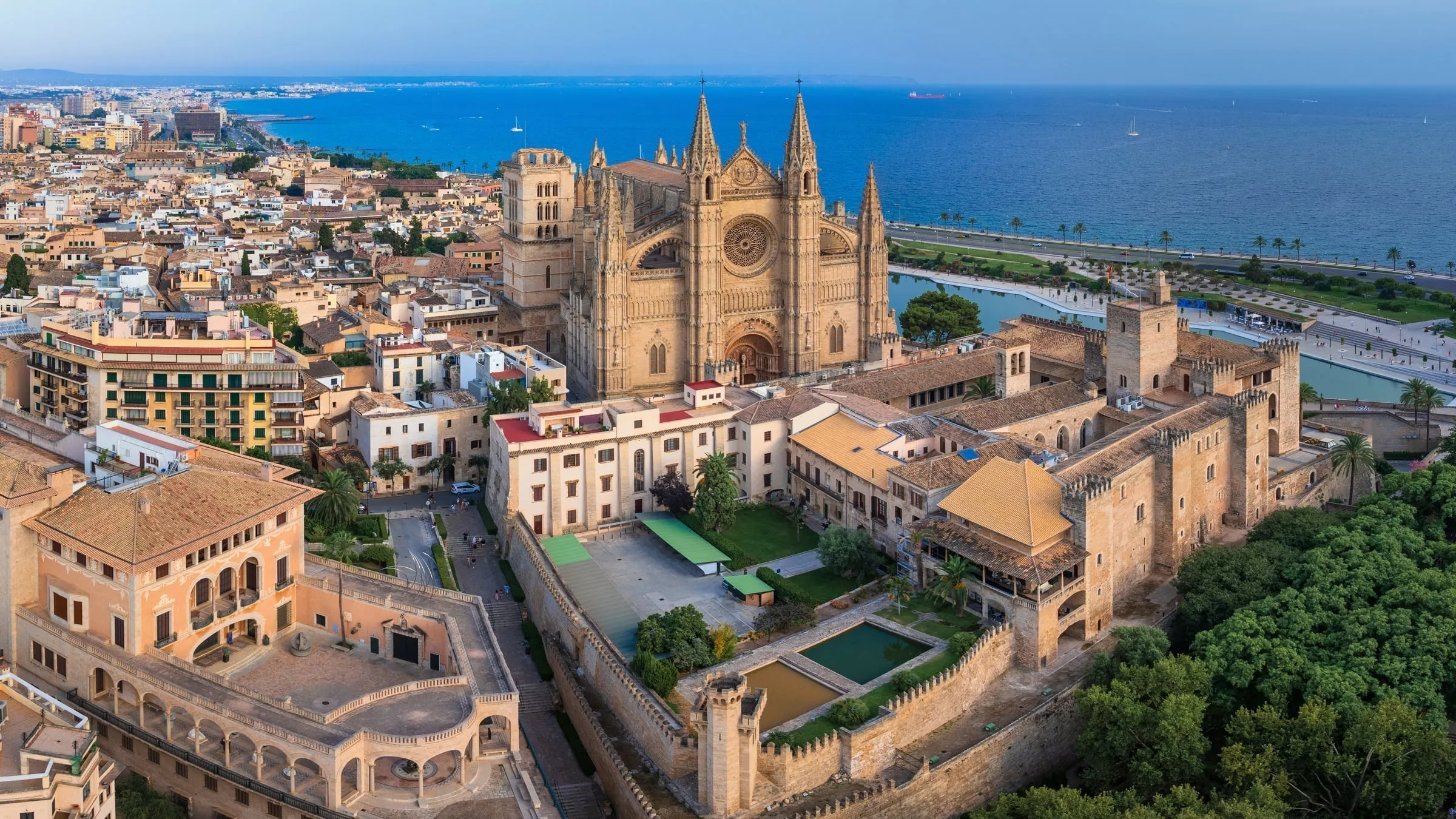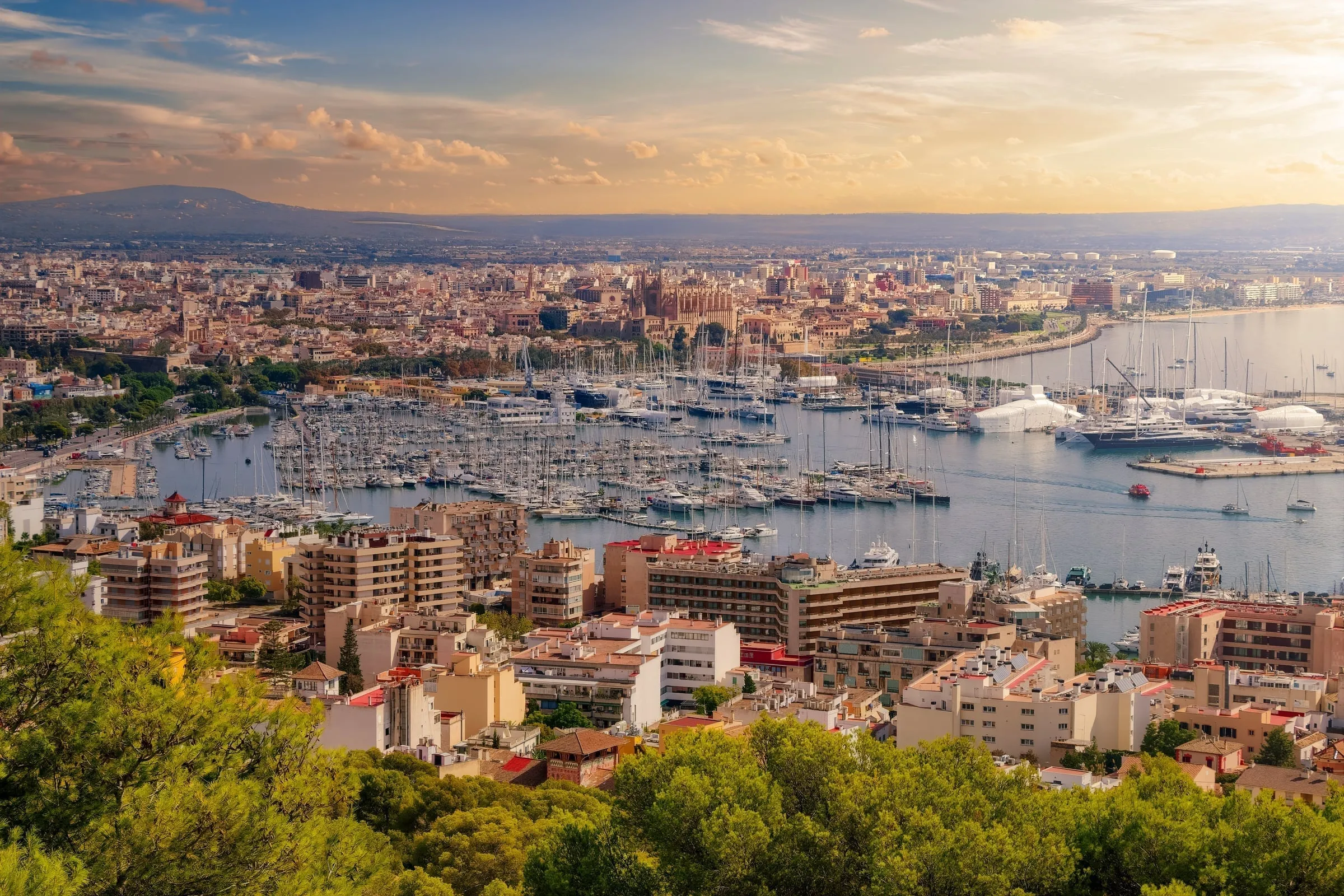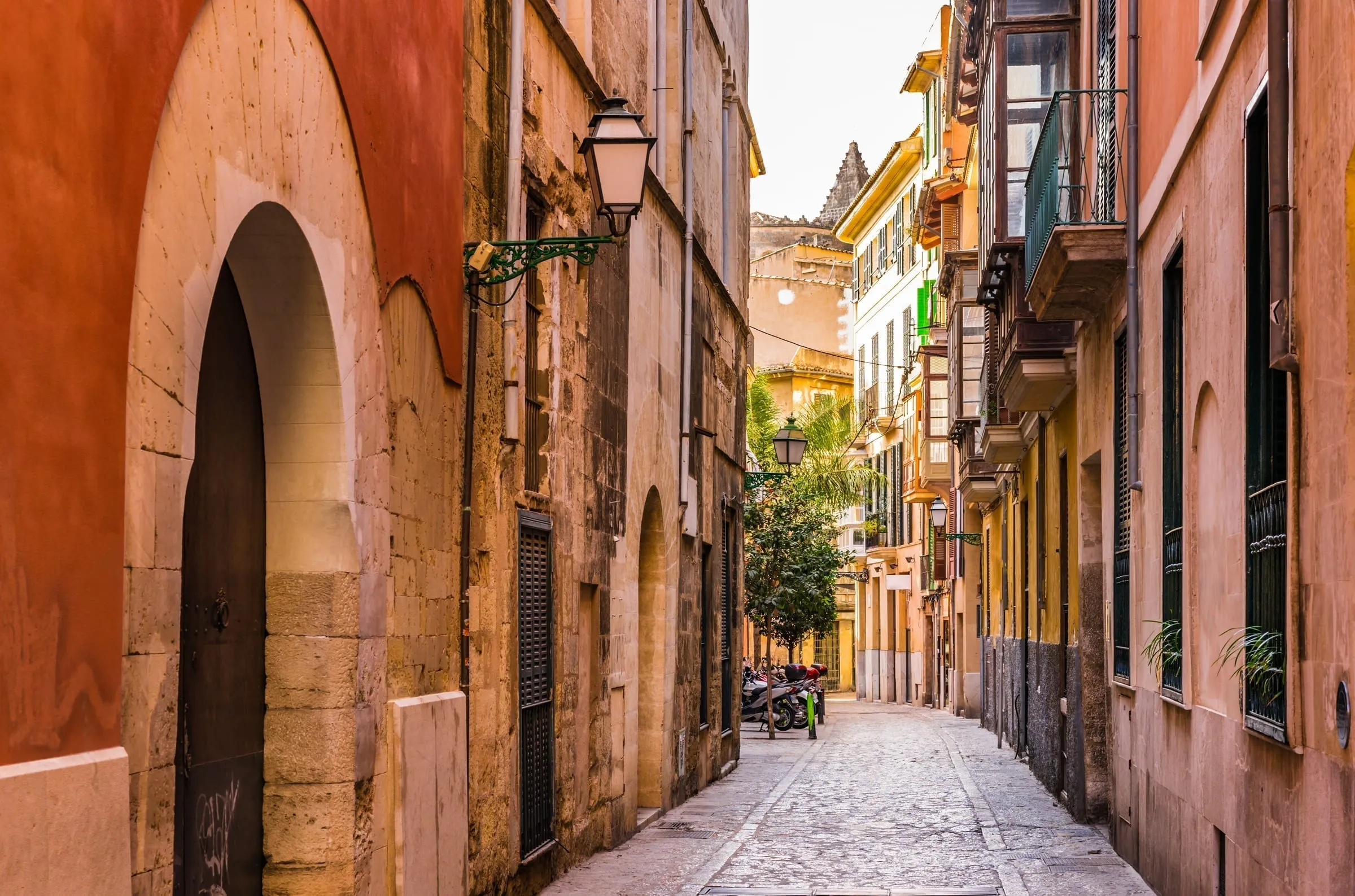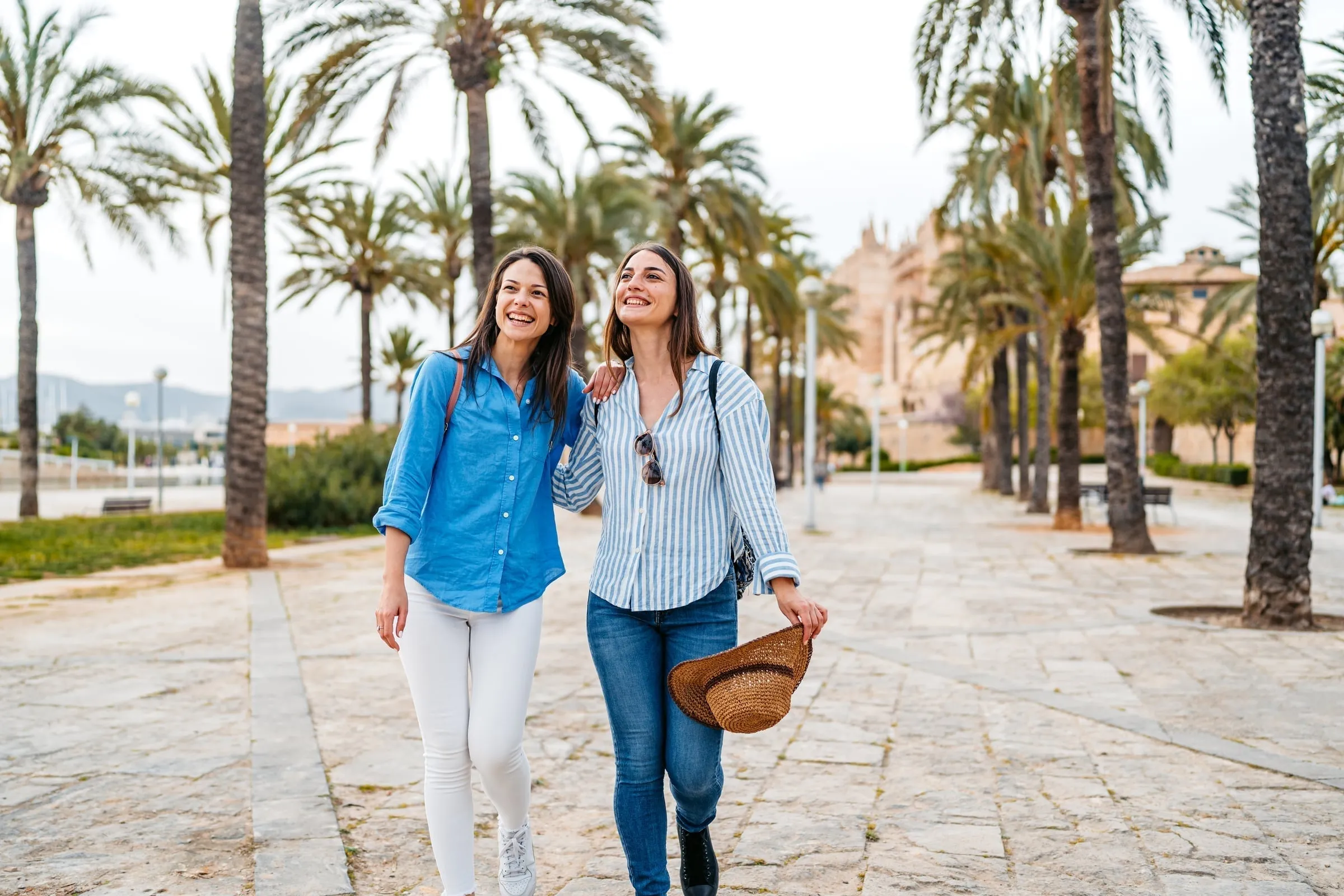The Beautiful Catastrophe: How Success Nearly Killed Palma
At 7:30am on a Tuesday in March, I’m walking through Palma’s Gothic Quarter while the city still belongs to its residents. Maria opens her neighborhood bakery on Carrer Can Sanç, the same one her grandmother ran before mass tourism transformed this street into an Airbnb corridor. Three blocks away, workers clean graffiti that appeared overnight: “Tourists go home” spray-painted across 14th-century limestone walls.
This is Palma’s paradox in 2025: one of Europe’s most beautiful capitals, saved by tourism money and nearly destroyed by tourism pressure. La Seu Cathedral still dominates the skyline as it has for 800 years, but the medieval streets below now house more tourists than locals. The Mercat de l’Olivar still sells the finest produce in the Mediterranean, but you’ll fight Instagram photographers for space to actually buy vegetables.
I’ve lived between Palma and the mountains for 15 years, watching this city transform from authentic Spanish port town to international destination. The Gothic architecture survives, the cathedral remains magnificent, and pockets of genuine local life persist – but finding them requires increasingly local knowledge and strategic timing.
This isn’t the Palma guide that tells you everything is wonderful. It’s the guide that tells you what’s really happening, where authentic experiences still exist, and how to visit respectfully in a city struggling with its own success.
The Numbers That Tell the Story
430,000 residents share their city with 15+ million annual visitors. That’s 35 tourists for every local. In the historic center, 72% of properties are now tourist rentals, forcing families who’ve lived here for generations to move to the outskirts. Average rent has increased 340% since 2015.
The morning cruise ships arrive, the old town population triples. By afternoon, central streets resemble theme parks more than neighborhoods. By evening, when the tours depart, you can finally hear church bells that have rung for centuries but are now often drowned by rolling suitcases and tour guide amplification.

La Seu Cathedral at sunrise: Before the cruise ships arrive and the city transforms from Spanish capital to international tourist destination.
The Cathedral That Built a City: Understanding La Seu
Gothic Masterpiece or Tourist Magnet?
La Seu Cathedral began construction in 1229, the year King James I of Aragon conquered Mallorca from the Moors. Nearly 400 years later, this Gothic masterpiece was completed, creating what many consider the finest example of Mediterranean Gothic architecture.
What Makes It Special The rose window, 11 meters in diameter, creates light effects that change hourly throughout the day. Antoni Gaudí’s wrought-iron canopy over the altar represents one of his lesser-known masterworks. The cathedral’s position, built on the foundations of a mosque, overlooks the Mediterranean with views that have inspired visitors for eight centuries.
The Tourist Reality Summer queues stretch around the cathedral square. Entry costs €9, and audio guides cost extra €4. The best photography spots fill with tour groups by 10am. The rooftop tours (€16 additional) book solid weeks in advance.
When Locals Visit Early morning (8:00-9:30am) or late afternoon (after 5pm) when tour groups depart. Sunday morning Mass (10:30am) is free but requires respectful behavior. The cathedral at sunset, when golden light floods through the rose window, remains magical despite the crowds.
Gaudí’s Hidden Influence Most tourists admire the wrought-iron canopy without realizing it’s Gaudí’s work. The modernist architect spent 10 years (1904-1914) modifying the cathedral’s interior, adding his distinctive organic style to Gothic foundations. Look for curved lines that seem to grow from the stone – that’s Gaudí’s signature.
The Almudaina Palace: Living History
The Royal Palace of La Almudaina, built on Moorish foundations, serves as the official Mallorcan residence of the Spanish King. This isn’t just a museum – it’s a working palace where state functions still occur.
Historical Layers Roman foundations, Moorish palace, Christian fortress, royal residence – each civilization built upon the previous, creating architectural archeology visible in the courtyards and chambers.
The Royal Reality When King Felipe VI visits (several times yearly), sections close to public access. The palace functions as both tourist attraction and working government building, creating a unique atmosphere of living history.
What You’ll Actually See Royal apartments, Moorish baths, tapestry collections, and courtyards where kings have received ambassadors for 800 years. The Kings’ Hall contains medieval murals depicting conquest scenes that shaped Mallorca’s identity.
Practical Tips Combined tickets with the cathedral save €2. Palace gardens provide respite from crowds and city heat. Free on Wednesdays for EU residents (bring ID).
The Neighborhoods That Matter: Where Real Palma Survives
Santa Catalina: The Hipster Haven
Santa Catalina was Palma’s fishing and working-class district until hipsters, artists, and digital nomads discovered its proximity to the center and relatively affordable rents. Now it’s the city’s most internationally flavored neighborhood, for better and worse.
The Good Mercat de Santa Catalina remains authentic, serving locals while offering excellent tapas bars. International restaurants provide variety unavailable elsewhere in Palma. The neighborhood maintains community spirit despite gentrification pressure.
The Changes Traditional bars close as rents increase. Long-term residents struggle with noise from tourist parties. Airbnb proliferation reduces housing availability for locals.
Where to Experience It Plaça de la Navegació on weekend mornings when locals shop at the market. Carrer de Soler for authentic tapas bars that haven’t been discovered by food bloggers.

Santa Catalina market at 8am: When local vendors arrange produce that was growing on the island yesterday, before the Instagram food tours arrive.
La Llotja-Born: Where Money Meets History
La Llotja (the former Stock Exchange) represents Palma’s medieval commercial power – Gothic architecture built by merchant wealth. Today, the surrounding Born district houses luxury shopping, art galleries, and restaurants targeting sophisticated tourists and affluent locals.
Historical Context La Llotja (1426-1448) showcases civic Gothic architecture designed to impress foreign merchants. The twisted columns and ribbed vaulting demonstrate Mallorca’s 15th-century wealth and power.
Modern Reality Passeig des Born boulevard serves as Palma’s luxury shopping street, where international brands occupy historic buildings. Rents here rival Barcelona or Madrid – local businesses can’t compete.
Authentic Experiences Bar Bosch (established 1936) serves cortados and croissants to locals who’ve been coming for decades. Galería Maior showcases contemporary Mallorcan artists. Teatre Principal programs both Spanish and Catalan productions.
Es Molinar-Portixol: The Last Fishing Villages
Once separate fishing settlements, Es Molinar and Portixol now represent Palma’s most expensive waterfront neighborhoods. Traditional fishing boats share harbor space with superyachts, creating social tensions in miniature.
The Transformation Fishing families sold waterfront properties for millions, moving inland while their former homes became luxury restaurants and boutique hotels. The area maintains fishing activity but caters primarily to affluent tourists and expatriates.
What Survived Ca’n Eduardo restaurant (founded 1943) serves excellent seafood to locals and tourists alike. The morning fish market (8am-10am) still operates, providing fresh catch to island restaurants. Traditional boat repairs continue alongside yacht services.
Walking the Waterfront The Paseo Marítimo promenade connects city center to these villages via pleasant 30-minute walk. Best experienced early morning when fishermen work and before restaurants open for tourist service.

Palma’s Gothic Quarter at dawn: Medieval streets that have witnessed 800 years of history, now echoing with rolling suitcases more than church bells.
The Food Scene: Authentic vs. Tourist Traps
Where Locals Actually Eat
The Challenge Tourist restaurants dominate central areas, often serving mediocre food at inflated prices to visitors who don’t know better. Finding authentic local dining requires moving away from obvious locations and following Spanish meal timing.
The Spanish Schedule Lunch (2pm-4pm) and dinner (9pm-11pm). Restaurants catering to locals close between 4pm-8pm. Tourist restaurants serve continuously, which immediately identifies them as non-authentic.
Local Indicators Menus in Spanish/Catalan only, local customers comprising 80%+ of diners, realistic prices, and staff who don’t automatically assume you want English service.
The Menú del Día Spain’s greatest culinary institution – three courses plus bread and wine for €12-18. Available Monday-Friday at restaurants serving working locals. Tourist areas charge €25+ for inferior versions.
Bar Bosch
Traditional Spanish caféSignature dishes
Operating since 1936, unchanged atmosphere. Stand at the bar like locals do – table service costs more and changes the experience.
Ca'n Joan de S'Aigo
Historic pastry shopSignature dishes
Founded 1700, recipes unchanged. They close when ensaimadas sell out (usually by 8:30pm). The ice cream recipe is 300 years old.
Mercat de l'Olivar Bar
Market tapas barSignature dishes
Packed with market vendors and locals. Using ingredients bought downstairs that morning. Cash only, no English menu, perfect authenticity.
Ca'n Eduardo
Traditional seafoodSignature dishes
Founded 1943, family-run. Waterfront location with authentic atmosphere. Book ahead – popular with locals for special occasions.
Markets: The Heart of Local Life
Mercat de l’Olivar: Palma’s Gastronomic Cathedral
Palma’s main market occupies a magnificent 1951 building designed specifically for food commerce. This isn’t just a tourist attraction – it’s where locals shop, restaurant chefs buy ingredients, and authentic food culture survives.
The 7am Strategy Arrive when vendors arrange their displays and locals buy ingredients for lunch. This is when you’ll find the best products, reasonable prices, and vendors willing to explain their specialties to curious visitors.
What to Buy Gamba roja (red prawns from Mallorca waters), sobrasada made from black Mallorcan pigs, ensaimadas from traditional bakeries, and seasonal produce grown on the island.
The Upstairs Secret Bar Mercat serves €8 plates of mixed tapas using ingredients purchased downstairs. It’s crowded with vendors on breaks and locals who know this represents Palma’s best food value.

Mercat de l’Olivar at its peak: Where local chefs source ingredients and families shop for Sunday lunch, the beating heart of Palma’s authentic food culture.
Santa Catalina Market: The Neighborhood Heart
Mercat de Santa Catalina serves the city’s hippest neighborhood while maintaining authentic local character. Smaller than l’Olivar but more intimate, with vendors who know their regular customers by name.
The Community Aspect This market functions as neighborhood social center where residents gather for morning coffee, vendors share gossip, and children grow up learning about seasonal eating.
What’s Different More international products reflecting the neighborhood’s diversity, excellent prepared foods for busy professionals, and tapas bars that serve both locals and informed visitors.
Timing Tuesday, Thursday, and Saturday mornings (8am-1pm) when local families do major shopping. The atmosphere is most authentic before tourist walking tours arrive around 10:30am.
The Culture Vulture’s Palma: Art, Music, and Intellectual Life
Museums Worth Your Time
Es Baluard Museum Contemporary art museum built into historic fortifications, showcasing Mediterranean artists and providing spectacular harbor views. The building itself represents successful integration of historic and modern architecture.
Fundació Pilar i Joan Miró The artist’s Pallorcan studio and collection, preserved exactly as Miró left it. More intimate than major city museums, showing how international artists found inspiration in island life.
Castell de Bellver Unique circular castle offering 360-degree views of Palma Bay. The Gothic architecture is remarkable, but the views explain why every civilization that conquered Mallorca built fortifications here.
Music and Performance
Teatre Principal Historic opera house programming Spanish classics, contemporary drama, and occasional English-language performances. Ticket prices remain reasonable (€15-45) compared to major European capitals.
Palma Cathedral Concerts Religious and classical music performed in extraordinary Gothic acoustics. These concerts provide cathedral access after tourist hours, combining architectural appreciation with musical experience.
Jazz Scene Blue Jazz Club and Café Central maintain live music traditions in intimate settings. Local and international musicians perform for knowledgeable audiences including both residents and music-loving visitors.
Literary Palma
Palma’s literary heritage includes connections to Robert Graves, Anaïs Nin, and George Sand, all of whom found creative inspiration in Mallorca. The city maintains several literary cafés and bookshops that honor this tradition.
Llibreria Literanta (Carrer de la Missió 9): Independent bookshop specializing in Mediterranean literature, travel writing, and local authors. Staff provide excellent recommendations and understand the literary landscape of the islands.
The Practical Reality: Getting Around and Staying Sane
Transportation Strategy
Walking Central Palma is completely walkable. The old town, cathedral area, Born district, and Santa Catalina are all within comfortable walking distance (15-25 minutes between neighborhoods).
EMT Bus System Comprehensive, affordable (€1.50 per ride), and reliable public transport connecting all city neighborhoods. Locals use buses extensively – they’re not just tourist transport.
Cycling BiciPalma bike-sharing system provides access throughout the city (€12/week subscription). Dedicated bike lanes connect major areas, and the flat terrain makes cycling pleasant for most fitness levels.
Parking Reality Street parking is scarce and expensive (€2-4/hour). Underground parking costs €15-25/day. Park outside the center and take public transport, or choose accommodations with included parking.
Accommodation Without Gentrification Guilt
The Dilemma 72% of old town properties are now tourist rentals, contributing to local displacement. Your accommodation choice affects real people and communities.
Responsible Options
- Hotels that employ local staff and contribute to city tax revenue
- Licensed vacation rentals that comply with local regulations
- Accommodations outside the historic center, reducing pressure on residential neighborhoods
- Properties owned by local families rather than international investment funds
Areas to Consider Eixample (the expansion district) offers excellent value, local atmosphere, and easy access to the center without occupying residential housing. Santa Catalina borders provide authenticity without maximum gentrification impact.
Real Daily Costs in Palma (Per Person)
As of August 2025Seasonal Strategies: When Palma Belongs to Whom
Peak Season Reality (June-September)
The Numbers 4+ cruise ships daily, Old town population triples, restaurant queues standard, parking nearly impossible, prices increase 40-60%.
Survival Strategies
- Start sightseeing by 8am before tour groups arrive
- Eat lunch at 2pm and dinner after 9pm following Spanish schedule
- Visit neighborhoods (Santa Catalina, Es Molinar) instead of city center
- Book restaurants and activities well in advance
What’s Good All facilities open, excellent weather, vibrant street life, evening events and festivals, extended daylight hours.
What’s Challenging Overwhelmed infrastructure, tourist-focused service, inflated prices, crowded attractions, difficulty finding authentic experiences.
Shoulder Season Sweet Spots (April-May, October-November)
The Balance Tourist facilities remain open but crowds decrease significantly. Locals reclaim their city while visitors can still enjoy full services.
Weather Considerations April and May offer perfect weather (22-26°C) with occasional rain. October remains warm (20-25°C) with higher rainfall probability. November becomes unpredictable but often delivers sunny days.
Local Life Returns Restaurants serve locals again, markets focus on residents rather than tourists, cultural events target community rather than visitors, and authentic atmosphere becomes accessible.
Winter Reality (December-March)
The True City Tourist services reduce dramatically, many restaurants close or reduce hours, but authentic local life flourishes. This is when you experience Palma as Palmesanos do.
What Closes Many tourist attractions reduce hours, beach clubs and waterfront restaurants close, some museums operate limited schedules, and cruise ship visits nearly cease.
What Emerges Local festivals and traditions, authentic restaurant menus, neighborhood bars serving regulars, reduced prices across all sectors, and genuine cultural experiences.
Weather Reality 15-18°C with occasional storms, but many days offer pleasant sunshine perfect for walking and cultural activities.
The Uncomfortable Questions: Responsible Tourism in an Overtouristed City
The Local Perspective
March 2025 protests saw thousands of Palmesanos march demanding limits on tourist accommodation and cruise ship arrivals. Signs reading “Our city is not your playground” appeared throughout the old town. Local political parties now campaign on tourism reduction platforms.
Housing Crisis Average rent increased 340% since 2015. Young locals can’t afford to live in the neighborhoods where their families have lived for generations. Teachers, nurses, and service workers commute from increasingly distant suburbs.
Infrastructure Stress Water consumption peaks during tourist season strain island resources. Waste management systems designed for 400,000 residents serve millions of visitors. Traffic congestion affects local quality of life daily.
Your Role as a Visitor
Positive Contributions Tourism provides employment for 35% of the local workforce. Visitor spending funds historic preservation, cultural institutions, and public services. International appreciation helps preserve architectural and cultural heritage.
Negative Impacts Airbnb proliferation displaces residents. Cruise ship arrivals overwhelm infrastructure. Tourist-focused businesses replace local services. Cultural authenticity becomes performance for visitor consumption.
Visiting Responsibly
Choose Accommodation Carefully Stay in licensed hotels rather than unlicensed rentals. Choose properties outside the historic center when possible. Book directly with local businesses rather than international platforms.
Respect Local Rhythms Follow Spanish meal timing and siesta hours. Learn basic Spanish or Catalan phrases. Shop at local markets and neighborhood businesses. Avoid photographing residents without permission.
Support Authentic Businesses Eat where locals eat, even if it’s less convenient. Buy from independent shops rather than international chains. Choose locally-owned services over multinational alternatives.
Understand Your Impact Every photo you post influences where others will visit. Consider whether sharing location tags helps or hurts vulnerable places. Travel thoughtfully, not just Instagrammably.
When to Visit
Jan
Authentic city life
Feb
Perfect for culture
Mar
Spring awakening
Apr
Ideal conditions
★ BestMay
Perfect weather
★ BestJun
Tourist season begins
Jul
Cruise ship chaos
Aug
Avoid if possible
Sep
Still crowded
Oct
Balance returns
★ BestNov
Local life emerges
★ BestDec
Authentic experiences
The Future of Palma: What’s Coming
Government Response to Overtourism
Regulatory Changes New limits on tourist accommodation licenses, restrictions on cruise ship arrivals, increased tourist taxes (€4-18/night depending on accommodation type), and zoning changes to protect residential neighborhoods.
Infrastructure Investment Improved public transport, pedestrianization of central areas, waste management upgrades, and water resource conservation projects funded by tourist tax revenue.
Cultural Preservation Subsidies for traditional businesses, protection of historic architecture, and programs supporting local cultural institutions against gentrification pressure.
Tourism Industry Adaptation
Quality Over Quantity Movement toward higher-value, lower-impact tourism. Luxury accommodations, cultural experiences, and sustainable travel options increasingly replace mass tourism models.
Seasonal Redistribution Marketing efforts to promote shoulder season visits, winter cultural programs, and year-round attractions to reduce summer concentration.
Local Integration Requirements for tourism businesses to hire locally, source products from island suppliers, and contribute to community development projects.
What This Means for Visitors
Higher Costs Tourist taxes, accommodation restrictions, and quality focus will increase visit costs but potentially improve experience quality.
Advanced Planning Popular periods will require earlier booking, more attractions may implement reservation systems, and accommodation choices will be more limited but potentially more authentic.
Different Expectations Emphasis on cultural appreciation rather than entertainment consumption, respect for local communities rather than service expectations, and understanding travel impact rather than just travel convenience.
The Essential Truth About Palma
After 15 years watching Palma transform, I’ve learned that this city’s greatest asset – its livability and authenticity – is also what tourism pressure threatens most directly. The Gothic architecture will survive tourism; the living culture that created and maintains it may not.
What Palma Offers One of Europe’s most beautiful historic cities, Mediterranean lifestyle that combines sophistication with warmth, architectural heritage spanning Roman to contemporary periods, and cultural institutions that rival much larger capitals.
What Palma Risks Losing Neighborhood communities that maintain local culture, affordable housing for residents who provide essential services, businesses serving local needs rather than tourist expectations, and the authentic atmosphere that makes visitors fall in love with the city.
Your Choice Matters Every decision you make as a visitor – where you stay, where you eat, what you photograph, how you behave – influences whether Palma maintains its essential character or becomes another beautiful museum city empty of authentic life.
The Real Secret The most rewarding Palma experiences happen when you stop trying to “do” the city and start learning to “be” in it. Sit in Plaça Major at 6pm when office workers grab drinks. Shop for dinner ingredients at Mercat de l’Olivar like a local resident. Walk the city at dawn when it belongs to street cleaners, bakers, and people going to work.
These moments won’t produce Instagram content, but they’ll connect you to what makes Palma extraordinary: not just its monuments and museums, but the living Mediterranean culture that continues to create beauty, community, and meaning in one of Europe’s most endangered urban environments.
This guide reflects conditions as of August 2025. Tourism regulations, business operations, and local attitudes change regularly in response to overtourism pressures. Always verify current information and approach the city with respect for its residents and their ongoing challenges.
Palma de Mallorca Travel FAQ
01 How many days do I need to see Palma properly?
2-3 days minimum to see major sights and experience local neighborhoods. 4-5 days allows for deeper cultural exploration and day trips. One day is possible but rushes the experience and misses the city's authentic atmosphere.
02 Is Palma worth visiting just for the day from beach resorts?
Yes, but you'll miss the best aspects – local life, authentic dining, and the city's rhythm. Day-trippers typically see only tourist highlights. Staying overnight allows you to experience Palma when locals reclaim their city.
03 What's the best way to avoid crowds at major attractions?
Visit before 9am or after 5pm when tour groups depart. Buy tickets online in advance. Choose weekdays over weekends. Winter and shoulder seasons offer dramatically better experiences with fewer crowds.
04 Is it safe to walk around Palma at night?
Very safe by European standards. The old town, Santa Catalina, and Born areas are well-lit and regularly patrolled. Standard urban precautions apply, but violent crime against tourists is rare.
05 Do I need to speak Spanish to enjoy Palma?
English works in tourist areas, but learning basic Spanish or Catalan phrases greatly improves interactions with locals. Many authentic restaurants and shops operate primarily in Spanish, especially outside the center.
06 What's the real cost of eating and drinking in Palma?
Local places: €3-5 breakfast, €12-18 menú del día lunch, €20-30 dinner. Tourist areas: €8-12 breakfast, €25-35 lunch, €35-50 dinner. The quality difference often favors local establishments.
07 Should I rent a car for exploring Palma?
Not necessary and often counterproductive. Parking is expensive and difficult, the center is walkable, and public transport is excellent. Rent a car only if planning day trips outside the city.
08 How can I visit Palma responsibly given the overtourism issues?
Stay in licensed hotels rather than Airbnb, eat at local restaurants, shop at neighborhood businesses, visit during off-peak seasons, learn basic Spanish, and respect local customs and residential areas.
